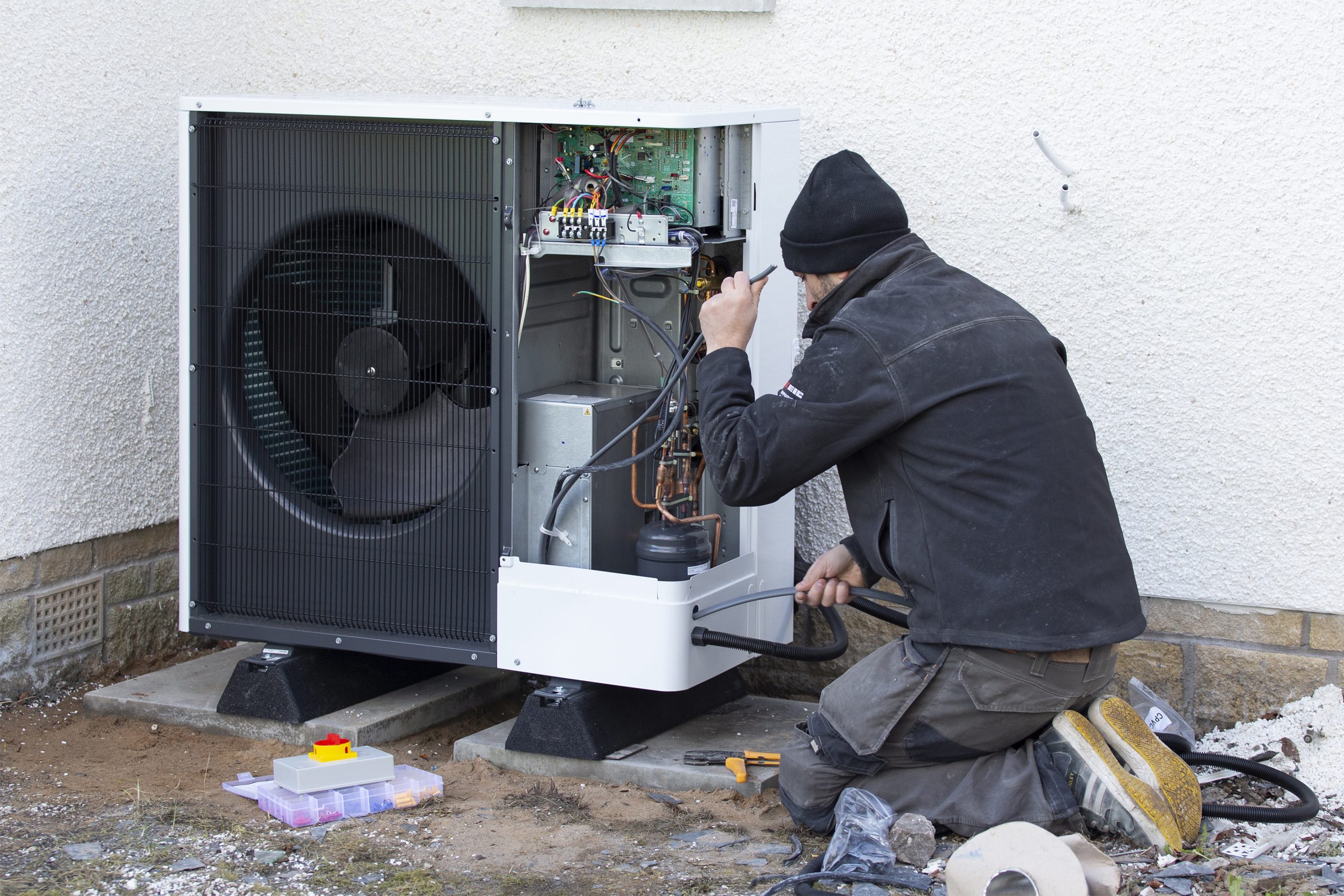1. Why heat pumps?
Heat pumps are viewed as the most immediate net zero heating solution.
By 2045, polluting heating systems like gas and oil boilers will be prohibited across all Scottish homes and buildings. To meet installation demands, it’s estimated that Scotland will need 7,500–15,500 heat pump installers.
Over the course of the next Parliament term, the Scottish Government will make up to £1.8 billion of funding available for heat and energy efficiency to help secure the accelerated rollout of both energy efficient and zero emissions heat installations.

This investment comes as part of the Scottish Government’s Heat in Buildings Strategy, which aims to achieve net zero greenhouse gases by 2045.
By 2045, emissions from homes and buildings will have to fall by 68% against 2020 levels.
This represents a change on a massive scale from the 3,000 net zero heating systems currently installed in Scotland annually to an estimated 200,000 per year by the late 2020s.
In order to make progress now towards Scotland’s net zero ambitions, accelerating and scaling up the deployment of already tried and tested measures such as energy efficiency and primary heating system technologies, where they are known to be no or low regrets, is vital.
Hydrogen
The Scottish Government views heat pumps as one of the “no and low regrets” strategic technologies, as they are suitable for almost all homes and may also reduce energy bills, depending on the system you are replacing.
The Scottish Government do not consider that hydrogen will play a central role in the overall decarbonisation of domestic heat. However, hydrogen might have a role to play in the decarbonisation of Statutory Independent Undertakings (SIUs) which are gas networks in Scotland not connected to the national gas network. There is also potential to blend up to 20% hydrogen in the gas grid.
The Scottish Government continue to press the UK Government to expedite progress on amending regulations and legislation to support hydrogen blending and accelerate decisions on the role of 100% hydrogen in the gas grid.